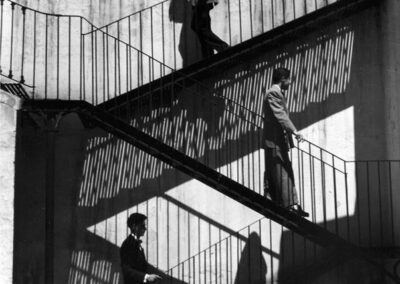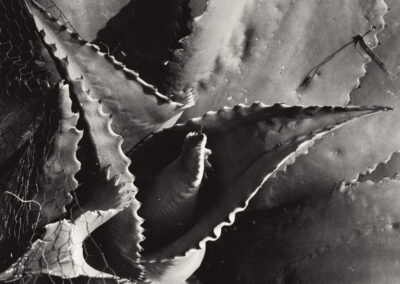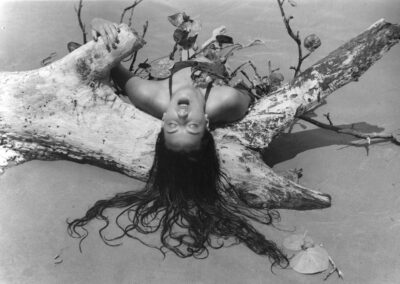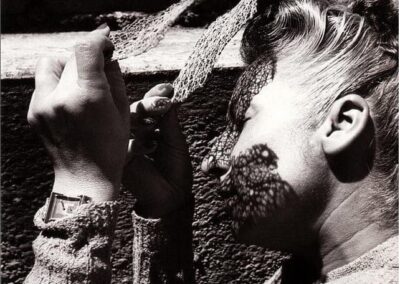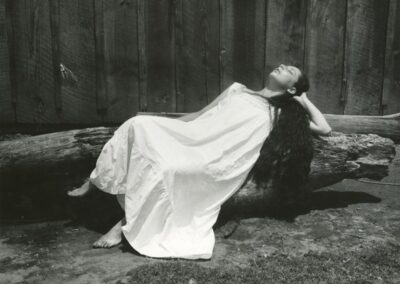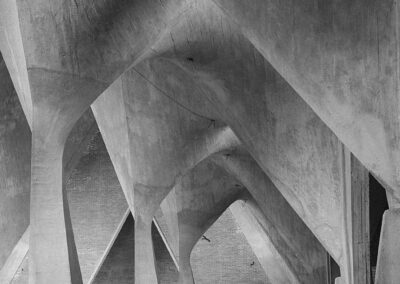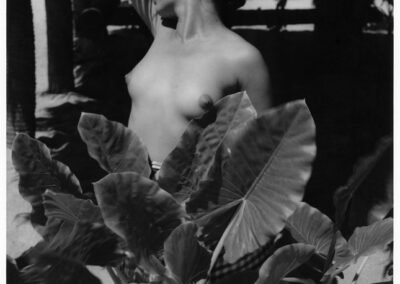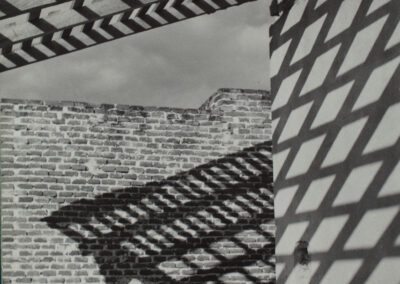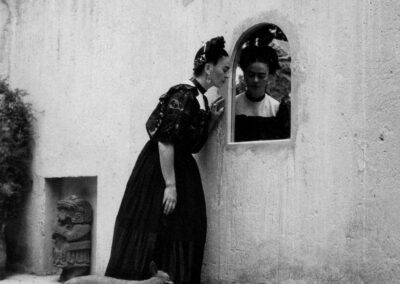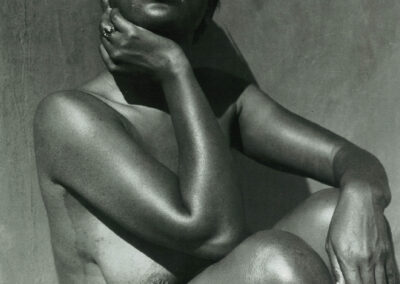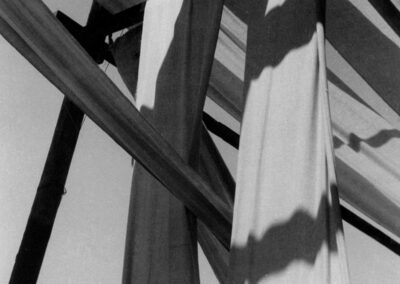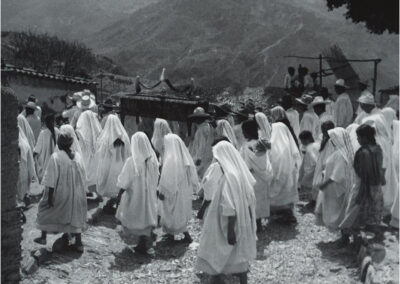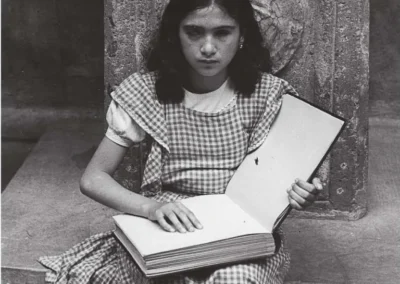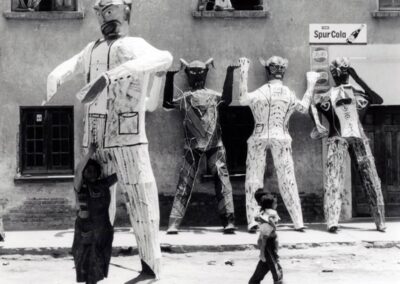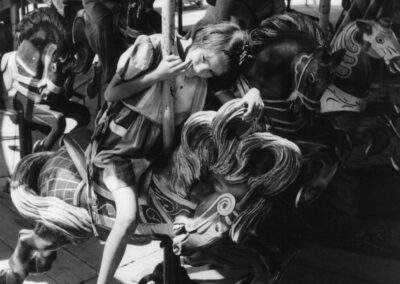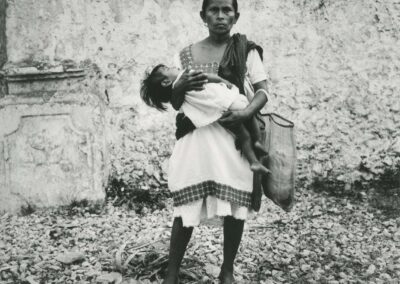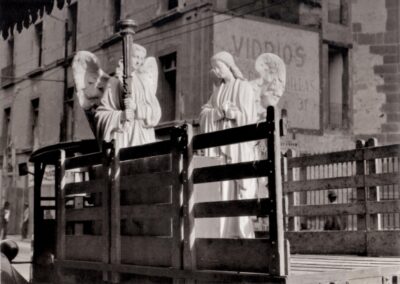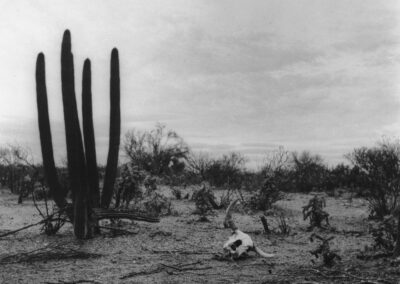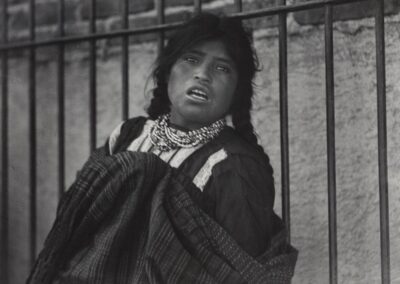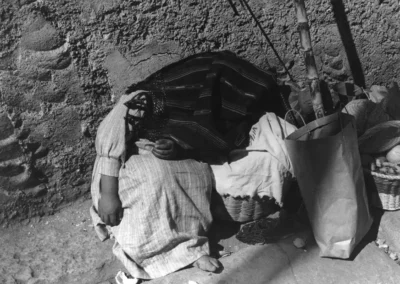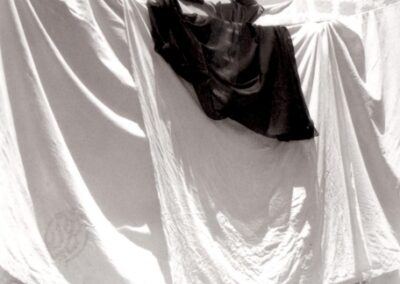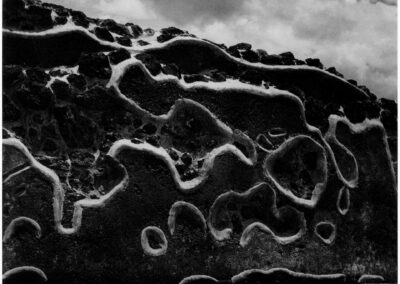Our next Artist You Need To Know is Lola Álvarez Bravo (1903 – 1993).
Lola Álvarez Bravo is acclaimed as the first Mexican female photographer and an essential artist – both in terms of photography and history – in the post – revolution (1910 to 1920) Mexican renaissance.
Dolores Martinez de Anda (as she was originally known) was born in 1903 in Lagos de Moreno, Mexico, but the majority of her childhood was spent in Mexico City. Her family enjoyed a degree of wealth until the death of her father in 1916, and her brother raised her, but being of a more conservative ilk was planning to send his sister to a convent school and hoping for her to have a ‘traditional’ life. But her neighbour was Manuel Álvarez Bravo (1902–2002), whom she married in 1925 and through being his assistant she began her own exploration of photography.
Their artistic circle included such notable figures as Diego Rivera, Frida Kahlo (some of the most well known images of Kahlo were taken by Bravo), José Clemente Orozco, Rufino Tamayo (a previously featured Artist You Need To Know), Maria Izquierdo and David Alfaro Siqueiros. Álvarez Bravo would divorce her husband in the 1930s : this marks the true beginning of her career and expressing her own ideas and aesthetic. Her images are a mix of portraiture and street photography. Álvarez Bravo’s photographs offer a “surreal documentation of Mexico’s people, cities, and villages” : she was influenced by the work of photographers Edward Weston and Tina Modotti. (from artnet)
“If anything is useful about my photography, it will be the sense of being a chronicle of my country.”
She worked as a documentary photographer for nearly three decades (beginning in 1935) : Álvarez Bravo was employed in this role by a number of agencies which include the Secretaría de Educación Pública (SEP) and the Instituto Nacional de Bellas Artes. She also taught art, during this period, in public schools through the aforementioned SEP.
Álvarez Bravo had her first solo exhibition at Mexico City’s Palace of Fine Arts In 1944. She had her own gallery (in Mexico City) for nearly a decade (beginning in 1951) that platformed her contemporaries in the Mexican art world. Álvarez Bravo mounted Frida Kahlo’s only solo exhibition in Mexico during the latter’s lifetime : many of her portraits of Kahlo suggest not only a personal friendship but a commitment – and her own importance – to the cultural vibrancy of this period in Mexico’s cultural scene. Laurent Aubague – in writing about the work of Álvarez Bravo and her importance to ‘Mexican Modernity’ – spoke of how Álvarez Bravo’s images of Kahlo are about “immortalizing characters who will become myths”, and how she incorporated some of the best and most exciting ideas of Western art into her own depictions of her country and its people. (from here)
During her life, Álvarez Bravo traveled extensively around Mexico and photographed many instances of the everyday life of her fellow citizens : but she was also important through her work as an art teacher, curator, film director, and gallery owner.
“In my photos there are things about Mexico that are no longer seen. If I was lucky enough to find and capture those images, they can later serve as a testimony of how life has happened and transformed, images that reached me very deeply, like electricity, and made me press the camera.”
“Sometimes I wanted to say something, and photography didn’t fully allow me to do it. So I’d take a sheet of cardboard, make a drawing, select the negatives, print them the necessary size, then cut and paste.”
In 1953, when asked by a journalist from Excélsior to identify Mexico’s most important painter, Mexican painter Alfonso Michel replied, “Lola Álvarez Bravo – her compositions are those of a woman who knows how to see the thing itself”.
Álvarez Bravo continued her photography work until the late 1980s : her eyesight became poor, and she was forced to abandon her practice. In 1981, her home state of Jalisco awarded her a medal of distinction in recognition of her contribution to arts and culture in Mexico, and four years later, a plaque was installed in her honor in Guadalajara’s historic Degollada Theater.
Álvarez Bravo died on 31 July 1993 in Mexico City. She bequeathed her archive to the Center for Creative Photography (CCP) at the University of Arizona in Tucson, Arizona : this spurred a traveling exhibition titled Lola Alvarez Bravo: In Her Own Light and a publication of the same name. Álvarez Bravo’s son Manuel (among others, but his bequests were the most significant) continued to add to the collection and with these ‘new’ additions, the understanding of her work and the vision of her practice has expanded. Several other exhibitions were organized by the CCP, including the exhibition Lola Álvarez Bravo : the Photography of an Era (2013).
A Google Doodle was created to mark her117th birthday on April 3, 2020. It depicted her holding her camera, intent on the task at hand, which is fitting as she had commented that “to begin with, I find something that attracts me, then I immediately try to make it perfect in composition and light.”
From the accompanying text to Lola Álvarez Bravo: The Photography of an Era : Lola Álvarez Bravo “is one of Mexico’s most important twentieth century photographers…she had a prolific career, which spanned nearly fifty years….Her experimentation with photographic techniques such as photomontage and photo collage and her use of photography to expose the social and political issues of her time, contributed greatly to the development of modern Mexican photography.” Álvarez Bravo is often spoken of in tandem with a previously featured Artist You Need To Know : Graciela Iturbide. Both are as much social historians as they are artists that have helped define Mexican culture. An interesting connection is that Lola Álvarez Bravo’s husband (the aforementioned Manuel Álvarez Bravo, a significant artistic figure in his own right) was Iturbide’s teacher and mentor.
“I was the only woman fooling around with a camera on the streets and the reporters laughed at me. So I became a fighter.”
More about her life and work can be seen here and here. A short documentary about Lola Álvarez Bravo can be enjoyed here.

